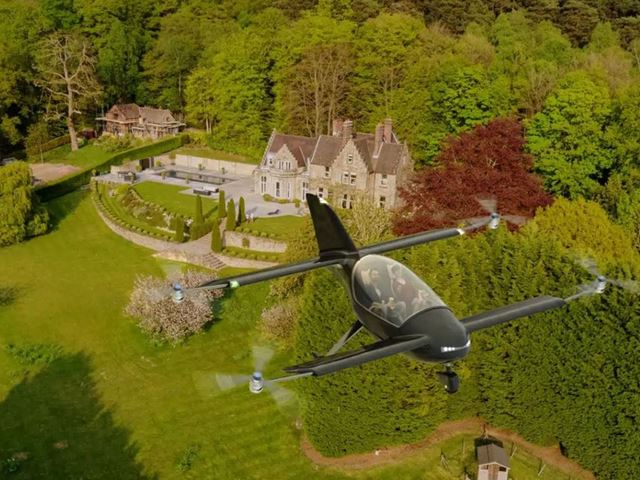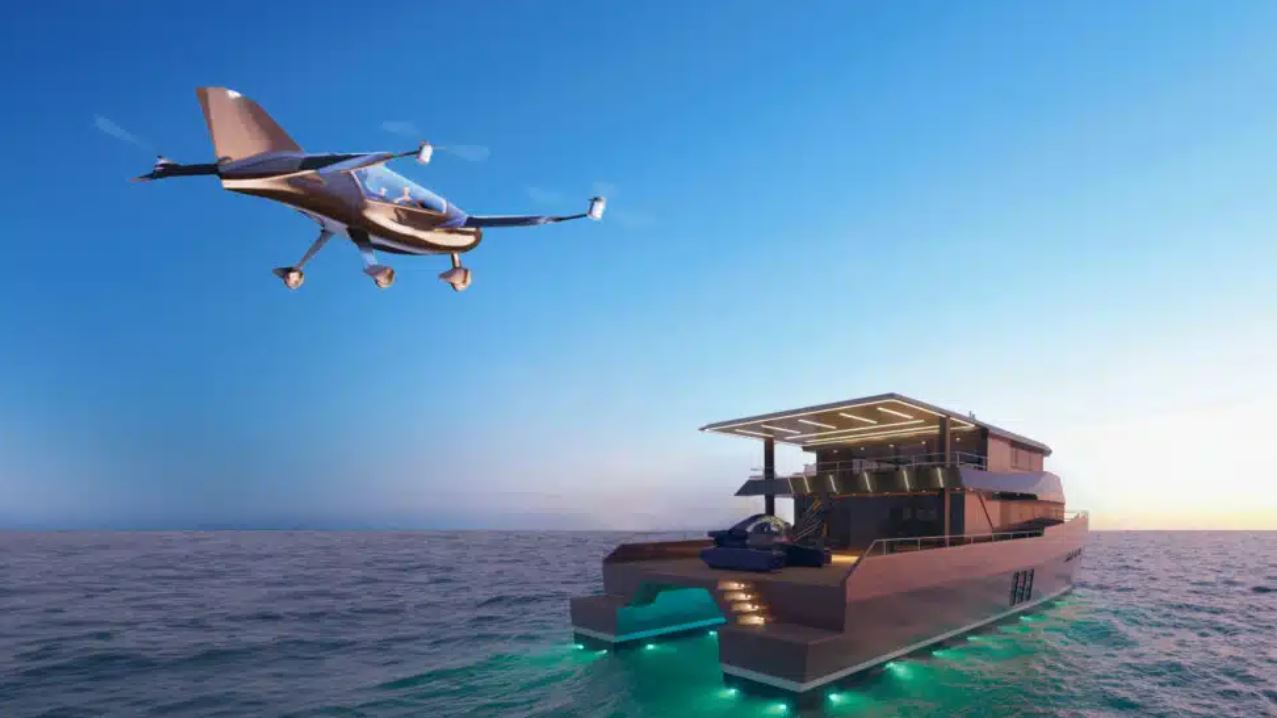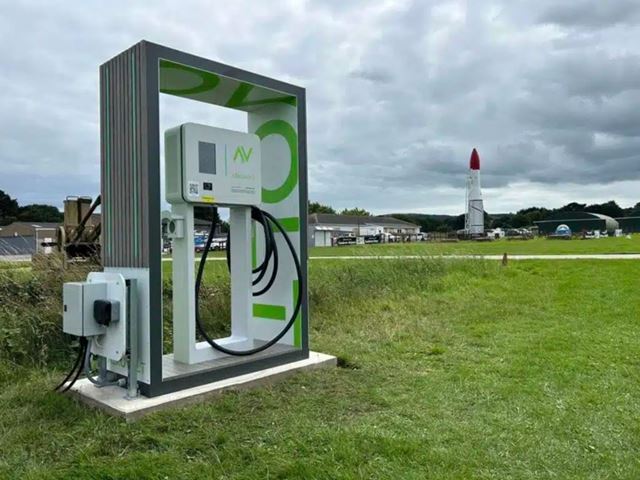
- Latest: Welcome to Auto Futures - Mobility News, Features, Exclusives and More...
- Latest: Subaru Europe Unveils the Brand's First All-Electric Compact SUV
- Latest: Lucid, Nuro & Uber Partner on Next-Generation Autonomous Robotaxi Service
- Latest: GM & Redwood Materials to Repurpose EV Batteries for Energy Storage
- Latest: Stellantis Discontinues Hydrogen Fuel Cell Technology Development Program
- Latest: Paving the way for an Electrified Future - L-Charge CEO
"Your Very own Flying car" - Why the UK Startup Skyfly is Taking a Different Route for its eVTOLs
Adrian Smith
- Feb 22 2024

The Axe is a two-seat electric vertical take-off and landing (eVTOL) aircraft designed for private owners, not as a commercial air taxi. The UK startup behind it is Skyfly, which has been flying a prototype since 2021 and began producing its first series production aircraft in 2023.
"The design of the Axe is unique. Most eVTOLs have no wings, relying purely on their rotors to produce lift and forward speed; this is not especially energy efficient and 'rotors only' eVTOLs generally have a low top speed and short range of 50 miles or less," says Michael Thompson, Skyfly's CEO.
"Some eVTOLs try to solve this problem by adding wings and rotating motors, which point upwards for vertical take offs and landings, and forward for the cruise. This is more efficient, but the rotating motors are heavy, complex, and introduce unnecessary points of failure."
The Axe eVTOL takes a different approach. It has four wings and fixed-angle rotors at a 45 degree angle.
"For vertical take offs and landings, the Axe flies slightly nose high, with the motors generating lift. Then, for forward flight, the Axe pitches slightly nose low, with the motors producing forward thrust and the wings producing lift, resulting in a 30kW energy use, half that of a Tesla which needs an eco-unfriendly road, where rotors only eVTOLS burn 130kW or more to carry the same two people."
"This explains why the Axe can have a one hour fully electric endurance and can work with existing battery technology, compared to the herd who have 15 minutes/15 miles of range," adds Thompson.
This Axe has a top speed of 100 miles per hour and a range of 100 miles. The hybrid version has a range of 300 miles.
"This is a personal aircraft, your very own flying car, which can be kept at home and flown from your garden or driveway, all without disturbing the neighbours, converting a one hour car journey into 15 minutes of relaxing smooth flight with amazing views, flying direct leaving the work to the autopilot. The Axe is also the fraction of the cost of a helicopter, and much easier to maintain," explains Jaap Rademaker, CCO of Skyfly.
However, the Axe also shares some features with a fixed-wing aeroplane. Its four wings and fixed-angle motors allows it to take off or landing on a runway like a conventional aeroplane, which saves energy.
The wings also give substantial safety benefits. A vertical landing requires a huge amount of thrust, but a conventional landing can be flown gliding using the lift from wings, with no power at all.
The Axe has four layers of safety redundancy. Firstly, the Axe has eight electric motors powering four rotors, each with their own battery pack. This means that, should one motor fail – or even if two motors fail on opposite sides – the aircraft can still produce enough power to fly relatively normally and land safely.
Secondly, the Axe has a quadruple-redundant flight controller.
Thirdly – thanks to its four wings – it is able to make a glide landing in the unlikely event of a complete power failure.
Finally, it can optionally be fitted with a ballistic parachute, which can deploy and gently carry the entire aircraft and its occupants to safety if there is nowhere to make a glide landing.
"There are plenty of aircraft with multiple engines and good glide performance, but no ballistic parachute. There are aircraft with good glide performance and a ballistic parachute, but only one engine. Helicopters may have multiple engines, but they cannot have no ballistic rescue parachute and cannot glide, and other eVTOLs cannot make glide landings either," says Rademaker.
"The Axe eVTOL is the only aircraft with all four layers of safety - and we are proud to be the first globally to on that basis have obtained insurance for future Axe owners from a leading French insurance company," he adds.

Pit Stops For eVTOLs
Skyfly is working with electric aircraft charging company AeroVolt to prove the Axe’s compatibility with its network of charging facilities at UK airfields. This summer Skyfly is set to use its first series production Axe to demonstrate the UK’s first airfield-to-airfield eVTOL flight using public charging infrastructure.
"AeroVolt currently runs 5 operational charging points at airfields around the UK, with 24 more due to be operational by 2025. In total, there are plans for over 60 charging points at UK airfields. So far, these chargers have been used by fixed-wing electric aircraft like the Pipistrel Velis Electro, but we see no reason why they couldn’t also be used by eVTOLs such as the Axe," says Thompson.
"The ability to use AeroVolt’s charging network will open up countless new route options for Axe owners, allowing them to fly to and from dozens of airfields with the comfort of knowing they will be able to recharge their Axe when they arrive. This not only enables pilots to fly to and from those airfields directly, but also to use them as 'pit stops', hopping from one charger to the next to enjoy greater range than ever before," he adds.

The 'Three-Dimensional' Freedom Of Flying
Skyfly's first series production aircraft is now in final assembly and will conduct unmanned and manned test flights in March and April 2024. It plans to begin delivering the first Axe eVTOLs to customers by early 2025.
"Sneak preview - an even more energy efficient design has been developed by Skyfly which will have 6 seats .... and not have the drawbacks the designs the 'big players' in the eVTOL world have," Rademaker tells us.
It's also just announced an order for an Axe eVTOL by a customer as a companion for their forthcoming 80 foot yacht from Archipelago Expedition Yachts.
Finally we asked Rademaker what urban air mobility will look like by the end of the decade.
"By 2030, we imagine a future where Axe owners can use their eVTOL instead of a car to travel cross-country, visit friends and enjoy the three-dimensional freedom of flying, cutting journey times by up to three quarters and avoiding the uncertainty of road works and traffic jams. Instead of crawling uncomfortably on earth - you can rise above it all, enjoy beautiful views and let the autopilot do the work in a three dimensional ocean of space to move where traffic jams do not exist," he predicts.
"Our dream is that roads be consigned to lorries with heavy goods; the rest of us will travel by air," concludes Rademaker.
Popular Categories
